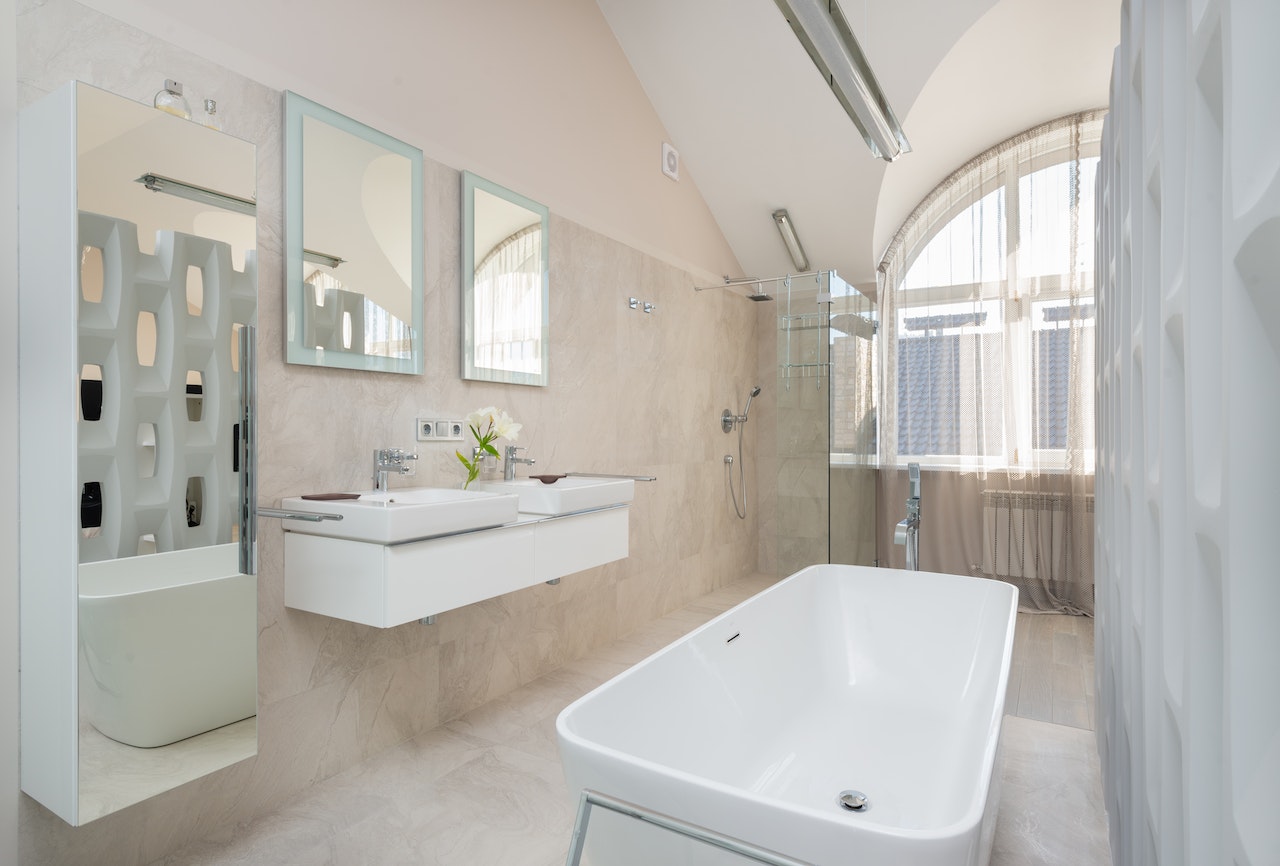As urban populations grow, the demand for efficient, well-designed tiny homes rises. Modern house design has evolved to meet this demand by creating functional and stylish spaces within limited square footage. The challenge lies in striking a balance between efficiency and elegance, ensuring that tiny homes maximise the available space and offer comfort, aesthetics, and a sense of openness. This article will explore the fundamental principles and strategies of modern house design for small spaces, highlighting how architects and designers are redefining the concept of compact living.

One of the fundamental principles of designing tiny homes is optimising the use of space. Every square inch counts and modern house design takes a holistic approach to ensure no wasted space. This means seamlessly incorporating multi-functional elements and intelligent storage solutions into the overall design. By carefully analysing the needs and habits of homeowners, designers can create custom storage solutions that maximise storage capacity while minimising visual clutter.
One innovative approach to maximising space in tiny houses is using built-in furniture and fixtures. These custom-designed elements are seamlessly integrated into the architecture, serving multiple purposes and eliminating the need for additional pieces of furniture. It includes built-in seating with hidden storage compartments, floating shelves, and wall-mounted shaving cabinets that optimise vertical space. By eliminating unnecessary walls and partitions, open layouts create a sense of spaciousness and fluidity, making tiny homes feel more significant than they are. This design approach allows for flexible use of space, with areas serving multiple functions. A living room can double as a home office or a dining area, and sliding doors or room dividers can create privacy when needed.
Modern house design for small spaces often incorporates ample natural light and strategic placement of windows. Natural light not only enhances the visual appeal of a space but also creates an illusion of openness. Large windows, skylights, and glass doors allow natural light to flood the interior, making it feel brighter and more expansive. Integrating outdoor living spaces, such as balconies or rooftop terraces, can extend the perceived boundaries of a small home and provide additional areas for relaxation and entertainment.
Efficient small house design also emphasises the importance of vertical space utilisation. When the floor area is limited, architects and designers look upward to optimise storage and living areas. This can be achieved using tall, floor-to-ceiling cabinets or shelving units that provide ample storage without encroaching on the floor space. Mezzanine levels or loft areas can be incorporated to create additional living or sleeping areas, utilising the vertical volume of the house.
Modern architecture for small spaces emphasises creating a sense of openness and visual continuity. This is achieved using cohesive colour palettes, minimalistic aesthetics, and strategic placement of mirrors. Light, neutral colours such as whites, creams, and pastels are commonly used to make a space feel larger and airier. Reflective surfaces, such as mirrors or glossy finishes, can be strategically placed to bounce light around the room and create the illusion of depth. When it comes to tapware in Australia, small homes often benefit from a minimalist approach. This approach will focus on functionality and elegance to create a sense of tranquillity and harmony in your bathroom or kitchen.
In small living areas, streamlined and compact furniture pieces play a crucial role by optimising space and contributing to a clean, uncluttered aesthetic. Multi-functional furniture, like sofa beds or storage ottomans, serve dual purposes, offering flexibility and adaptability. Selecting furniture with legs instead of fully upholstered pieces creates a sense of visual lightness, enhancing the perception of spaciousness in the room. These thoughtful design choices ensure that small spaces feel open, organised, and comfortable.
Modern house design for small spaces embraces outdoor integration, expanding the living space and creating opportunities for relaxation and entertainment. Patios, balconies, or rooftop gardens can seamlessly extend the interior, blurring the boundaries between indoor and outdoor areas. This integration not only adds square footage but also enhances the connection to nature, improving the overall liability of the tiny home. An exemplary example is the “Micro Apartment” movement in densely populated cities like Tokyo and New York. These compact living spaces prioritise efficiency and functionality, featuring transforming furniture, modular units, and integrated storage systems for maximum adaptability. Despite their small size, micro apartments provide all the necessary amenities for a comfortable living experience.
Modern architectural design for small spaces has evolved to meet the growing demand for efficient and elegant living solutions in urban areas. By optimising space utilisation, incorporating multi-functional elements, and prioritising natural light and open floor plans, architects and designers are redefining the concept of compact living. The key is to balance efficiency and elegance, ensuring that tiny homes offer comfort, aesthetics, and a sense of openness. As urban populations continue to increase, the principles and strategies of modern house design for small spaces will play a vital role in shaping the future of urban living.



MOST COMMENTED
Top stories / Uncategorized
How to Take Care of Your Sneaker Collection
Renovating
How To Use Wire With Furniture
Facts / Top stories
How to know if the Tasmanian job market is best suited for you
Uncategorized
How to travel around Tasmania
Tech
The Benefits of Aligning Business Functions
Tech
Crafting the Perfect Setup for Photography Enthusiasts
Tech
Enhancing Urban Mobility Through Traffic Management